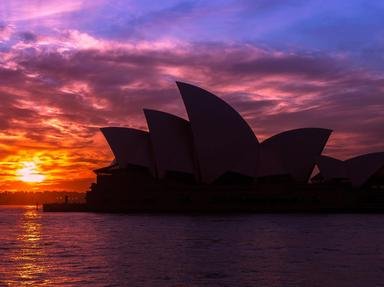Quiz Answer Key and Fun Facts
1. When Lieutenant John Oxley set off north in the cutter Mermaid from Sydney Town, his goal was to find land suitable for a new convict settlement. Ideally this new settlement would be set on a large freshwater river. As Oxley entered Moreton Bay he came across two men who told a tale of such a river. It proved true, and an ideal site for a settlement, with its broad banks, towering cliffs and fertile land was found. Who were the two men Oxley encountered?
2. Oxley named the new settlement 'Brisbane' out of respect for his uncle Vice Admiral Sir Thomas Brisbane. Brisbane had served as Lord Nelson's second in command at Trafalgar twenty years earlier.
3. The convicts arrived in 1824 and were put to work clearing pastoral land along the reaches of the river - not an easy task since regulations forbade them from using ploughs. One particular crop excelled and led to the construction of what still stands today as Brisbane's oldest building. What is this construction?
4. To rule a nasty settlement, Brisbane needed a nasty man and had one in the person of this commandant. Convicts often murdered each other to be executed themselves and escape his harsh punishments. Through his early exploration and naming of many southern areas, his name lives on in modern Brisbane. Who was this man?
5. The convicts toiled away clearing land, planting crops and establishing sources of coal and limestone. By 1842, the convicts had played their role and the Moreton Bay region was opened as a free settlement. The first settlers were mostly storekeepers and service providers who were catering to the needs of farmers who had settled the fertile flatland to Brisbane's West. What's the name of this rich agricultural area?
6. The free settlement of Brisbane needed a population and generous schemes were introduced to attract immigrants. In fact, if a family could afford their own passage they could buy 18 acres for just 18 pounds. Passengers on the first three immigrant ships - the 'Fortitude', 'Chaseley' and 'Lima' settled the valley just to the east of town. What did the new Brisbanites name the valley?
7. Brisbane started to sprawl on both sides of the river. With a population of 6000 the town was thriving. However, the absence of a river crossing, infrastructure and distance created problems between Brisbane and the government in NSW. In 1859, Queen Victoria gave the thumbs up, and the new colony of Queensland was established. Brisbane finally got its bridge. What was the name of Brisbane's first river crossing?
8. A new state, a new government, and seven pence in the treasury. Queensland was flat broke. Money was borrowed from English banks to continue the building program, but when these banks collapsed Brisbane came to a standstill. Things moved ahead again when another bank was found, this time a riverbank full of gold! Where was this large gold deposit discovered?
9. During the late 19th century and early 20th century, Brisbane attracted more immigrants than anywhere else in Australia. Rich agriculture, gold, fish stocks, thriving industry and not to mention a beautiful climate, why wouldn't it, though it wasn't all roses. In 1893 local aborigines warned "big fella comin' to take Brisbane away." Big fella did come and destroyed large parts of Brisbane. Which disaster occurred?
10. Nowadays, Brisbane centers a metropolis that sprawls for hundreds of kilometres. Golden beaches on the Pacific Ocean line each end, and a picturesque bay full of islands protects the middle. It's no wonder Brisbane continues to attract so many people. What was Brisbane's population at the end of the 20th century?
Source: Author
bertho
This quiz was reviewed by FunTrivia editor
bloomsby before going online.
Any errors found in FunTrivia content are routinely corrected through our feedback system.
